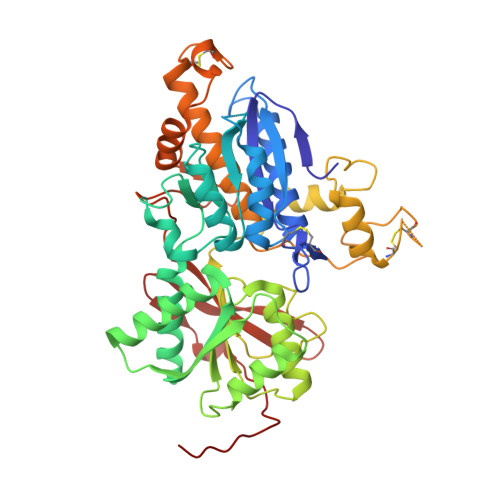Determination of L-AP4-bound human mGlu8 receptor amino terminal domain structure and the molecular basis for L-AP4's group III mGlu receptor functional potency and selectivity.
Schkeryantz, J.M., Chen, Q., Ho, J.D., Atwell, S., Zhang, A., Vargas, M.C., Wang, J., Monn, J.A., Hao, J.(2018) Bioorg Med Chem Lett 28: 612-617
- PubMed: 29402739
- DOI: https://doi.org/10.1016/j.bmcl.2018.01.037
- Primary Citation of Related Structures:
6BSZ, 6BT5 - PubMed Abstract:
L-2-Amino-4-phosphonobutyric acid (L-AP4) is a known potent and selective agonist for the Group III mGlu receptors. However, it does not show any selectivity among the individual group III mGlu subtypes. In order to understand the molecular basis for this group selectivity, we solved the first human mGlu8 amino terminal domain (ATD) crystal structures in complex with L-glu and L-AP4. In comparison with other published L-glu-bound mGlu ATD structures, we have observed L-glu binds in a significantly different manner in mGlu1. Furthermore, these new structures provided evidence that both the electronic and steric nature of the distal phosphate of L-AP4 contribute to its exquisite Group III functional agonist potency and selectivity.
- Discovery Chemistry Research and Technologies, Eli Lilly and Company, Lilly Corporate Center, Indianapolis, IN 46285, USA.
Organizational Affiliation:



















